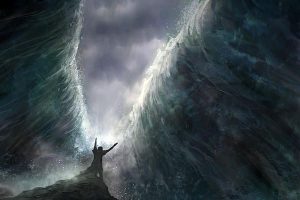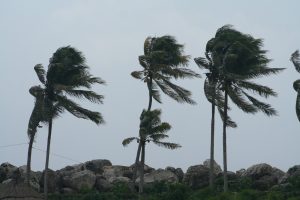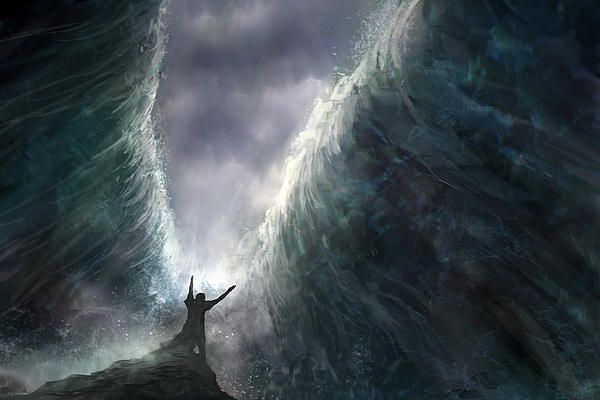Raboyseyee and Ladies,
GONE WITH THE WIND: Not the Movie
 Shoin, before we begin, I wanted to share -with permission of course- a letter written earlier this week by Rabbi Benjamin Blech, to Seth Rogan. The good rabbi needs no introduction but in case you never heard of him, check him out at www.RabbiBenjaminBlech.com (and buy his books). Here we go.
Shoin, before we begin, I wanted to share -with permission of course- a letter written earlier this week by Rabbi Benjamin Blech, to Seth Rogan. The good rabbi needs no introduction but in case you never heard of him, check him out at www.RabbiBenjaminBlech.com (and buy his books). Here we go.
Dear Seth,
I know that you’ve never claimed to be a historian, a theologian, a philosopher or a scholar. You’re a famous actor and comedian. Until last week, you pretty much stuck to the areas of your expertise.
I can’t blame you for going on Marc Maron’s podcast to plug your new movie – after all Maron has more downloads than any cable show has viewers. Your new film, An American Pickle, is a pretty far out fantasy with a Jewish “hook” that might even have an important message. It’s the story of a simple Jewish man named Herschel Greenbaum who works in a pickle factory in Brooklyn, falls into a vat of brine and stays there perfectly preserved for 100 years until he comes back to life to be with his great great grandson Ben in contemporary Brooklyn. I have no inkling how you developed the idea but to my mind it certainly would make for an interesting opportunity to focus on the link between generations as well as the mystical and miraculous reality of Jewish survival.
Seems that was wishful thinking on my part. Seth, you spent an hour of prime time with many millions of listeners savaging your fellow Jews, misrepresenting Jewish history, defaming Israel and Israelis, slandering Judaism and, in your own words, testifying that “religion is silly” and “for the preservation of the Jewish people it [Israel] makes no sense.”
I can’t help but wonder how your grandparents who taught you about the reality of anti-Semitism would feel about your performance if they could have been “pickled” and returned to life like the hero of your film. What I can tell you though is the absolute glee of Jew haters in the aftermath of your hour of shame. Mondoweiss, a left-leaning news website co-edited by journalists Philip Weiss and Adam Horowitz – two Jewish founders who describe themselves as progressive and anti-Zionist – reacted to your statements with the bold headline “Israel Is Ridiculous, Antiquated and Based on Ethnic Cleansing, Seth Rogen Says, But He’s Afraid To Tell Other Jews.” But obviously not afraid enough to prevent him from sharing his views on the most listened-to podcast in the world.
You have an obligation to think before you speak and to have some familiarity with facts before you libel people.
Seth, I don’t mean to swell your ego but in a celebrity-driven culture such as ours, what you say matters, and what you claim as truth can unfortunately influence the thinking of countless people. You have an obligation to think before you speak and to have some familiarity with facts before you libel people. How terrible, you shared with millions, that you were “fed a huge amount of lies about Israel my entire life! They never tell you that – oh by the way, there were people there. They make it seem like it was just like sitting there, like the (obscenity) door’s open they forget to include the fact to every young Jewish person.”
I understand that you’re not a scholar, Seth. It seems that it comes as a shock to you that there were in fact people other than Jews living in Palestine. Let me explain that to you how that happened.
We just finished commemorating Tisha B’Av, the ninth day of the Hebrew month of Av. For thousands of years Jews around the world have fasted and observed a day of mourning. We weep for what we once had. Our ancestors settled in the land God promised to Abraham in biblical times. There twelve tribes became a nation. There we had prophets who taught us as well as the rest of the world how to live lives of holiness, of justice and righteousness. And there we built a temple to the Almighty in order to bring His presence down to earth and His values and wisdom to serve as beacon for all mankind.
It was on Tisha B’Av that the Babylonians destroyed that temple and sent us into our first exile. But we wept by the rivers of Babylon and we would not forget our homeland. We returned and rebuilt. We saw the glory of yet another temple. And once again we learned that those who serve as the conscience of the world will be hated. The second Temple was destroyed by the Romans and in a striking coincidence – or as we see it the serendipity of God’s management of the universe – the date of the tragedy was once more the ninth of Av. Again we were forced into exile.
History had a remarkable sense of irony. The first Crusade was declared by Pope Urban II on July 20, 1095, leading to the death of 1.2 million Jews. The Hebrew date? Tisha B’Av. In 1492, the Golden age of Spain came to a close when Queen Isabella and her husband King Ferdinand ordered that the Jews be banished from the land “for the greater glory of the church and the Christian religion.” The edict of expulsion gave the Jews exactly four months to the day to put their affairs in order and leave the country. The Hebrew date on which no Jews were allowed any longer to remain in the land where they had enjoyed welcome and prosperity for centuries? Of course, Tisha B’Av.
And yet Jews never despaired. We never gave up on our “silly religion” or our claim to our national homeland – a place, Seth, you seem to think we don’t need because we can rely on other safe havens in spite of our history of oppression, exile and Holocaust.
When Dr. Chaim Weizmann, later to become the first president of the state of Israel, met with Lord Balfour, former prime minister of UK, and explained to him the Zionist idea, Balfour asked him why the Jews were opposed to the Uganda Plan as a substitute for Palestine. Wiseman responded: “Lord Balfour, suppose that I would offer to you Paris instead of London, would you accept?” “But,” Balfour said, “Dr. Weitzman, London is ours.”
“That’s true,” Wiseman answered, “but Jerusalem was ours when London was still a swamp.”
 Seth, maybe you really should study a little more about the history of your people. Yes, other people were in Palestine. But even a Jew-hating world somehow miraculously recognized, first by way of the Balfour declaration and then with United Nations recognition, that amidst a sea of newly created Arab countries Jews had a right to at least a tiny sliver of land they could call their own, harking back to thousands of years of linkage, physical, spiritual and emotional.
Seth, maybe you really should study a little more about the history of your people. Yes, other people were in Palestine. But even a Jew-hating world somehow miraculously recognized, first by way of the Balfour declaration and then with United Nations recognition, that amidst a sea of newly created Arab countries Jews had a right to at least a tiny sliver of land they could call their own, harking back to thousands of years of linkage, physical, spiritual and emotional.
The following story is probably apocryphal but its message is a truth, Seth, that should speak directly to your heart. Napoleon was once walking through the streets of Paris on Tisha B’Av. As he passed the synagogue, he heard the sounds of crying and mourning. “What’s this all about?” Napoleon asked. An aide explained that the Jews were mourning for the loss of their temple. “When did this happen?”, Napoleon asked. The agent replied, “About 1700 years ago.”
Napoleon was incredulous. “Certainly, a people which has mourned the loss of their temple for so long,” he said, “will merit to see it rebuilt.”
This Tisha B’Av, I wept for the two temples destroyed and the many other tragedies that were the result of horrors inflicted on us by others. I cried for the insensitivity, the thoughtlessness and – I hate to say it – the stupidity of our own people. How painful that post-Holocaust Jewry fails to recognize that suicide may be just as destructive as murder.
Seth, would you allow me to guide you and to help you find out why you are so gravely mistaken about Israel, about Judaism and about the Herschel Greenbaum you really are in the depths of your soul?
I would welcome the opportunity to learn with you.
Respectfully yours,
Benjamin Blech
 GONE WITH THE WIND: Not the Movie
GONE WITH THE WIND: Not the Movie
Just as the heylige Oisvorfer was struggling to find interesting tidbits in this week’s parsha of Eikev which is kimat 100% about Moishe’s ongoing -since Parshas Devorim- reproof of the Yiddin whom he calls “rebels against the RBSO” and worse, along came a hurricane or storm by the name of Isaias and wreaked some havoc on those in its path. And shoin, just like that, as the winds were gusting, the Oisvorfer was in business when he decided to venture out and experience the storm first hand. And taka, this past Tuesday, nature was on display. More correctly stated, a storm by the name of Isaias which left at least two million without power and at least 5 dead as it ripped through the East Coast on its way to Canada was on display. Isaias was strutting his or her stuff –exactly how Isaias identifies, ver veyst, ober one thing is zicher; it packed gale winds which uprooted trees, knocked out electricity and more. Exactly how wind strength is measured ver veyst, but a few things are zicher: powerful winds were gusting causing power outages, and transformer fires including one nearby the Oisvorfer’s house, oy vey, and leading to panic at many a home where freezers full of food -mostly on the way to the garbage one day in the near future- were in danger of thawing out. A freezer I have discovered overthe years is but a holding facility to assuage one’s guilt over throwing out extra leftover food. Ober once the food has served its required time in the freezer, it may be discarded. Shoin, azoy geyt di velt!
Welcome to Parshas Eikev where Moishe –as mentioned above- continues to remind the Yiddin of their shaky relationship with the RBSO. Weeks away from his own death -no more than 35 days according to informed sources- Moishe is again historic as he reminds the Yiddin of the many sins they committed by challenging the RBSO. Methodically, he will recall kimat every sinful incident over the past 40 years. The bottom line: the Yiddin, he tells them, are a stiff-necked people. He will reiterate -in a classic secharv’oinesh (reward/punishment) speech all the good the RBSO will shower upon them for proper behavior, for following in His ways, for observing His mitzvois, and other commandments. Alternatively, he will spell out consequences for going off the derech (the path) and fouling up again. And that’s about it for the entire parsha which also contains the second paragraph of the quintessential shema prayer, ober this week, given Isaias’s impact from hurricane strength winds, I thought we’d take a closer look at the role wind has played since the RBSO decided to create this world.
Ober ershtens, while the storm was raging, the Oisvorfer decided to venture out of his office where kimat instantly, his yarmulke flew off his head; oy vey and what to do? Chasing my yarmulke down the streets with wind gusts at 80 MPH was quite the adventure as the yarmulke -despite two farkakte clips, instantly took flight. Shoin: was the Ois going to let Isaias win? Was he going to walk without his kippa on his head? Say it’s not so and taka the Ois gave chase. It was at that moment –mamish- when the Ois began to ponder the wind; from whence does its power emanate? Is the RBSO at all involved in powering up wind?
 What is His relationship with wind? Is wind but nature? Are powerful winds miraculous? Is there a blessing for the wind? What is it? Does the RBSO send wind in every direction? Does he favor one direction over the others? Does He ever combine wind directions to create limoshol a ‘nor’easter’? Does He prefer one wind over the other? Does each wind serve -as do malochim (the RBSO’s angles)- a different purpose? Is a north wind better than a south wind? Does He use wind to get things done? To perform miracles? To send warnings, and perhaps even to punish? Shoin, so many questions you mistama never gave much thought to, ober the heylige Ois did this past Tuesday while coming face to face with the hurricane. Ober all these questions needed to wait as thought was also given to my obligations with regard to the donning of my kippah? Was my yarmulke wearing obligation suspended during the storm and specifically while giving chase? Should I have covered my head with one hand while giving chase? At the same time, I was also admiring the power of the wind; how it – at times- has the ability to display its power over kimat everything, including objects we believe to be immovable. And just like that, and with all quiet on the VAAD front – while each side contemplates its next moves- a topic for the week was born; thank the RBSO –as always- for saving the day.
What is His relationship with wind? Is wind but nature? Are powerful winds miraculous? Is there a blessing for the wind? What is it? Does the RBSO send wind in every direction? Does he favor one direction over the others? Does He ever combine wind directions to create limoshol a ‘nor’easter’? Does He prefer one wind over the other? Does each wind serve -as do malochim (the RBSO’s angles)- a different purpose? Is a north wind better than a south wind? Does He use wind to get things done? To perform miracles? To send warnings, and perhaps even to punish? Shoin, so many questions you mistama never gave much thought to, ober the heylige Ois did this past Tuesday while coming face to face with the hurricane. Ober all these questions needed to wait as thought was also given to my obligations with regard to the donning of my kippah? Was my yarmulke wearing obligation suspended during the storm and specifically while giving chase? Should I have covered my head with one hand while giving chase? At the same time, I was also admiring the power of the wind; how it – at times- has the ability to display its power over kimat everything, including objects we believe to be immovable. And just like that, and with all quiet on the VAAD front – while each side contemplates its next moves- a topic for the week was born; thank the RBSO –as always- for saving the day.
Shoin, let’s begin with this shaylo (question): If a G-d fearing, yeshiva bochur finds himself outdoors when a gust of wind takes control of his kippa, may he pursue it while not wearing one? In other words: may a person move about –even during an emergency- without his yarmulke? And while we’re pondering that question, let’s consider this: may one who does not have a yarmulke clip, bobby pin, or hair to hold the kippa in place, remove his kippa and pocket it during storm conditions? Or, must he secure it to his head with his hand as he moves about?
Avada there is nothing new -as does Shlomo Hamelech teach us- under the sun, and neither is this question. Says the kitzur Shulchan Aruch (halocho 3:6) azoy: one should not walk more than four amos (exactly how long an amo is, is up for debate and for another day, but let’s make believe it refers to one foot or step) without a head covering. Ober, are there any exceptions such as strong wind or the like? On the other hand, the Oisvorfer seems to recall that Rav Moshe Feinstein paskened (ruled) a number of decades back, that for parnoso (to make a living) one can forgo the head covering. Mamish? Does that mean that our holy fathers walked around –mit- a-hoilinkup- (sans yarmulke)? Seemingly that was the case though avada it’s a shtikel challenging to envision our holy Ovis and people like Moishe Rabaynu without one. Then again, did Charleston Heston wear a yarmulke while playing Moishe in the Ten Commandments? Not! Case closed? Also not.
 Moreover, we need to recall that the minhag (now efsher accepted law) to wear the yarmulke fulltime is but a few centuries old. And given those factors, efsher we can kler that the Kitzur’s ruling should even apply in cases of duress. Ober why taka do we wear the kippa? Seemingly the object of wearing a head-covering is so that we may be imbued with the fear of G-d. And if that’s the case, efsher we should assume that the need to be imbued with the fear of G-d is independent of the weather conditions. Moreover, avada a good G-d fearing Jew could and should find himself a head-covering which will deal adequately with the weather conditions: in other words, a hat or cap that fits epes more snuggly. On the other hand, we also know this: many Ashkenazi rabbis acknowledge that wearing a head covering at all times was once considered an optional “midaschasidus” [pious act] but that nowadays, full-time head covering is the norm except under extenuating circumstances. Sephardic communities generally did not have the custom of wearing a kipa all the time. Shoin! Some Diaspora Jews leave off the kipa at school, work, or when testifying in court, because of real danger or uneasiness in appearing in the secular world with an obvious symbol of Jewishness.
Moreover, we need to recall that the minhag (now efsher accepted law) to wear the yarmulke fulltime is but a few centuries old. And given those factors, efsher we can kler that the Kitzur’s ruling should even apply in cases of duress. Ober why taka do we wear the kippa? Seemingly the object of wearing a head-covering is so that we may be imbued with the fear of G-d. And if that’s the case, efsher we should assume that the need to be imbued with the fear of G-d is independent of the weather conditions. Moreover, avada a good G-d fearing Jew could and should find himself a head-covering which will deal adequately with the weather conditions: in other words, a hat or cap that fits epes more snuggly. On the other hand, we also know this: many Ashkenazi rabbis acknowledge that wearing a head covering at all times was once considered an optional “midaschasidus” [pious act] but that nowadays, full-time head covering is the norm except under extenuating circumstances. Sephardic communities generally did not have the custom of wearing a kipa all the time. Shoin! Some Diaspora Jews leave off the kipa at school, work, or when testifying in court, because of real danger or uneasiness in appearing in the secular world with an obvious symbol of Jewishness.
The bottom line: avada one should have his head covered all the time. Ober, extenuating circumstances can provide an exception. Those who are G-d fearing will mistama remain so even if giving chase to a flying yarmulke without one. Shoin all that being said, let’s get back to the RBSO’s special relationship with wind and how wind appears daily in our davening, is found all over the heylige Toirah to include myriad references in the Novee and elsewhere.
Says the heylige Toirah (Bereishis 2:7), azoy: And Hashem formed the man of dust from the ground, and He blew into his nostrils the breath of life; and man became a living being.” Says the elucidation to Targum Unkelos (an Aramaic translation of the heylige Toirah), azoy: “and a wind from before Hashem was blowing upon the surface of the waters.” Let’s also recall these words from Bereishis (2:6) when the RBSO made man come to life. The heylige Toirah tells us azoy “…..And He blew into his nostrils the soul of life.” Shoin, let’s blow in a few other references to wind.
As it turns out, the heylige Toirah contains several references to the power of the wind, its variability and its destructive potential. Besides such allegorical imagery, in many places the wind is referred to in practical terms. Grada (so happens) that only the four basic directions, east, west, north and south, are mentioned and associated with various on goings and events. Intermediate and combination winds, such as the nor’easter are not at all mentioned anywhere in the Toirah, Tanach, or even in the heylige Gemora. Wait, there’s more: out of the four winds of the Toirah, the “ruach-yomo,” the westerly wind, is the one which is mentioned most often and it is generally described as a very strong, hot and dry wind.
The heylige Toirah (Bereishis 41:6, 23, and 27) when describing Paroy’s dreams, talks of the heads of grain that sprouted and then got withered by the scorching east wind. In Yichezkel (Ezekiel 17:10, 19:12), we read how the strong and tall vine was uprooted and got completely withered and stripped of its fruit by the dry east wind. The east wind of the heylige Toirah is also a fierce wind (Isaiah 27:8, Job 38:24), it can destroy ships on the high seas (Psalm 48:7, Ezekiel 27:26), it can scatter and sweep out people (Job 15:2, 27:21, Jonah 4:8, Jeremiah 18:17).
In Sefer Shmois we read how the RBSO punished the Mitzrim with ten different forms of makos. The seventh plague was the plague of hail, and it was followed the next day by the eighth plague which was the plague of locusts (Shmois 10:13). The sequence was such that the massive hailstorms had already rendered the ground wet. The next morning the RBSO used the east wind to bring in a swarm of locusts, which found in the wet sandy soil an ideal environment to lay eggs and breed in huge numbers. Whatever had survived the hail, was completely devoured by the locusts. The following day, the RBSO changed the direction of the wind to a very strong west wind. It caught up the locusts and carried them into the Red Sea, and not a locust was left anywhere in Egypt (Shmois 10:19). The strong and dry east wind again played a major role in the parting of the waters of the Red Sea that enabled the Yiddin to cross it safely. The RBSO used the strong east wind to drive the sea back, turn it into dry land and divide the waters (Shmois 14:21). The sheer power of the east wind that made all this possible, was remembered for long (Psalm 78:26). As an aside, of the ten makos visited upon the mitzrim, only one describes the physical process, the method of delivery, the one with wind. In parshas Behaloischa(11:31) the quail are brought through a wind. And let us not forget the famous words back in second posik of parshas Bereishis (1:2) as the heylige Toirah describes the calmness before creation azoy: ורוחאלקיםמרחפתעלפניהמים ( the RBSO wind or spirit) was hovering over the waters. Says the Targum azoy: it was a wind from Hashem. Is the RBSO’s spirit manifested through wind? Why the same word -ruach- is used in the heylige Toirah and elsewhere to describe both wind and spirit, ver veyst, ober there is much written about spirit and wind in the kabolo. Formoreon this topic, check out the heylige Zoihar, or contact Madonna, or others more versed in this topic. The bottom line: wind does not appear stam azoy; seemingly the RBOS is behind all, including wind.
 In the book of Hosea, there is a warning for anyone who feeds on the wind, pursues the east wind all day, and multiplies lies and violence (12:1). An east wind from the Lord will come, blowing in from the desert; his spring will fail and his well dry up. His storehouse will be plundered of all its treasures (13:15). Hosea speaks of the fruitless deeds of evildoers in these words (8:7): They sow the wind and reap the whirlwind.
In the book of Hosea, there is a warning for anyone who feeds on the wind, pursues the east wind all day, and multiplies lies and violence (12:1). An east wind from the Lord will come, blowing in from the desert; his spring will fail and his well dry up. His storehouse will be plundered of all its treasures (13:15). Hosea speaks of the fruitless deeds of evildoers in these words (8:7): They sow the wind and reap the whirlwind.
What’s so special about wind that it’s mentioned when used by the RBSO? There seems to be no other force consistently mentioned when used by Him. Shoin, lets us switch directions and mention the north wind which seemingly also has a specific mission and purpose and let us read a shtikel Gemora where the north wind is discussed.
“And if you wish, say instead that it was because the north wind did not blow for them, and the hot weather was likely to lead to medical complications following the procedure. As it is taught in a breyso: All those forty years that the Jewish people were in the wilderness, the north wind did not blow for them.”Asks the heylige Gemora azoy:
“What is the reason that this wholesome wind did not blow all those years? If you wish, say it was because they were under censure following the sin of the spies and were therefore undeserving of this salutary wind. And if you wish, say instead that it was so that the clouds of glory covering the Tabernacle should not disperse.”
Said Rav Pappa: Therefore, learn from here that on a cloudy day or on a day that a south wind [shuta] blows, we may neither circumcise nor let blood [mesokhrinan], owing to the danger involved.
Said the Vilna Gaon: Hashem has three kinds of emissaries who extract payment from those who violate His will: Fire, Wind, and Water.Sodom was punished by Fire. In the time of Noiach, the world was deluged by Water. And the generation which built the Tower of Babel was spread by the Winds to the four corners of the earth.
The list of quotable quotes referencing winds and their power to either help, hurt, punish, and all else is quite long, ober the bottom lines are azoy: there are of course many instances and consistent phenomenon where the heylige Toirah relays a miracle or sign of the RBSO, but -as to the Oisvorfer’s research in the past 24 hours – certainly subject to revision- mostly when He carries the act out through wind, is the process specified. Why is this? Ver veyst? Daily, we mention wind in our davening when we recite these words from Tehillim 148:8: “aish, u’vorod, sheleg-v’kitor, ruach, sa’ori oiseh Devoroi” – fire and hail, snow and vapor, wind storming, fulling HaShem’s Word.” Another bottom line: every event, from the dew to the rainfall to the breeze to the storm, are evidence of the RBSO’s Omnipresence throughout the universe. Fartig! And guess what? The Shulchan Oruch (O.C. 227) addresses “fierce winds” and cites two possible brochis we may make when witnessing fierce winds. Hurricane Isaias was but an awesome demonstration of the RBSO’s vast power.
We close with another quote from Shlomo Hamelech, the wisest of all men (though marrying 1000 women makes me suspect efsher otherwise), who said azoy (Shir Hashirim 4:16): Awake, O north wind, and come, O south wind! Blow upon my garden, let its spices flow!
A gittin Shabbis-
The Heylige Oisvorfer Ruv
Yitz Grossman
